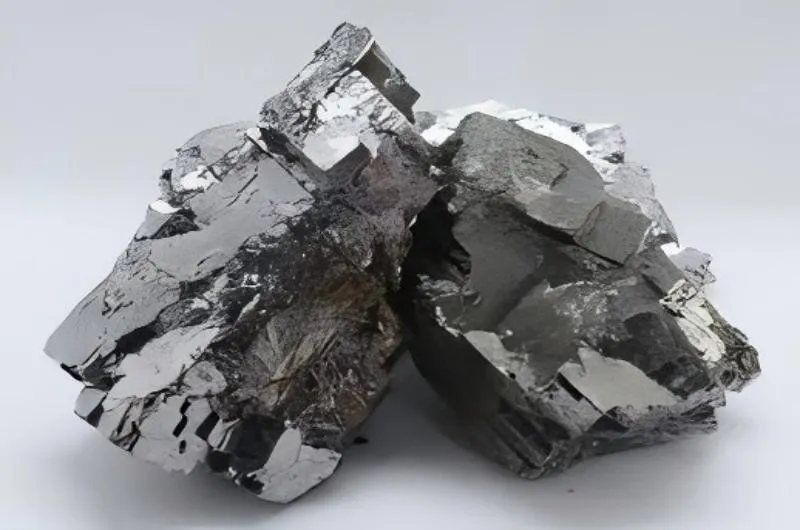BY  GENN
GENN
2024/12
Blog
Is Vanadium an Iron?
Vanadium is a silvery-grey metallic element with atomic number 23, located in the third row and fifth column of the periodic table. This transition metal is known for its high strength, low density, and corrosion resistance.
The Chemistry of Vanadium and Iron
Comparison of the chemical properties of Vanadium and Iron
Vanadium and iron are both transition metals, located in the same block on the periodic table. They share similarities in their chemical properties, such as forming multiple oxidation states. However, there are notable differences between the two elements.
One significant difference is in their reactivity with oxygen. Iron is highly reactive with oxygen, forming iron oxide (rust) when exposed to air and moisture.
In contrast, vanadium is less reactive with oxygen and does not readily form oxide coatings on its surface. Another difference lies in their solubility in water.
Iron has low solubility in water, whereas vanadium can form complexes with water molecules that increase its solubility. This characteristic makes vanadium useful in industrial applications such as catalysts for chemical reactions.
Differences in atomic structure and electron configuration between the two elements
The atomic structure of an element determines its chemical properties. Vanadium has an atomic number of 23, while iron has an atomic number of 26.
The number of protons determines the element’s identity; thus, vanadium has three fewer protons than iron. Both elements have a d-orbital electron configuration that contributes to their similar chemical properties; however, there are differences within these orbitals that affect how they behave chemically.
For example, vanadium’s D-orbitals are more spread out than iron’s D-orbitals, which affects its ability to bond with other atoms. While both elements have similar chemical properties due to being transition metals, differences exist based on their atomic structure and electron configuration.
The Physical Properties of Vanadium and Iron
Comparing the Melting Points, Boiling Points, and Density
Vanadium and iron are both transition metals that exhibit a range of physical properties in their pure elemental form. For example, vanadium is a silvery-grey metal that has a melting point of 1910 °C and a boiling point of 3380 °C.
In contrast, iron is a lustrous silver-grey metal that has a melting point of 1538 °C and a boiling point of 2862 °C. Therefore, it can be observed that vanadium has a higher melting and boiling point than iron.
Additionally, the density of vanadium is calculated to be approximately 6.11 g/cm2, while iron’s density is estimated to be around 7.87 g/cm2. From this data comparison aspect, we can conclude that despite being two neighboring elements in the periodic table with similar characteristics, they have significant differences in their physical properties.
Crystal Structures Comparison
Vanadium crystallizes into three different crystal structures depending on temperature: body-centered cubic (BCC) at room temperature; face-centered cubic (FCC) from roughly 882-1184°C; and body-centered tetragonal (BCT) above approximately 1200°C.
Iron also has three allotropic forms: alpha (α), beta (β), and gamma (γ). At temperatures below 770 °C or so, iron crystallizes into an alpha-iron or ferrite structure, which is BCC with eight atoms per unit cell.
Above this temperature range between about 770 and 910 °C, ferrite undergoes an allotropic phase transformation into beta-iron or austenite, which is FCC with eight atoms per unit cell. Beyond this temperature range above approximately 1,390 °C alpha-iron transforms into gamma-iron, which again becomes BCC but now with only two atoms per unit cell.
It should also be noted that there are some similarities between the two elements’ crystal structures since they both have multiple allotropes depending on temperature changes.
The Role of Vanadium in Biological Systems
A Glimpse into the Functionality of Vanadium
Research has uncovered that vanadium can be found in trace amounts within various living organisms, particularly within certain types of marine life. In these organisms, vanadium is believed to act as a cofactor for specific enzymes and proteins.
For instance, studies have shown that some species of tunicates utilize vanadium-based compounds for their defense mechanisms and metabolic processes. These compounds may enhance their oxidative state or participate in redox reactions, showcasing how an element often overshadowed by others can contribute to organismal vitality.
Moreover, the presence of vanadium is not limited solely to marine environments; it has also been identified in microorganisms like bacteria and fungi. Investigations suggest that these organisms utilize vanadium-containing enzymes for essential biochemical functions such as nitrogen fixation and denitrification.
The enzyme vanadate-dependent haloperoxidase is a prime example, facilitating halogenation reactions crucial for metabolic processes. This highlights the adaptability and significance of vanadium as a micronutrient across diverse ecological niches.
Iron: The Biochemical Powerhouse
Iron stands as a quintessential element within biological systems—often heralded as one of life’s essential building blocks. Its ubiquitous presence across all domains of life underscores its critical roles, most prominently through its incorporation into hemoglobin—the protein responsible for oxygen transport in vertebrates.
The binding affinity between iron atoms and oxygen molecules facilitates efficient delivery throughout tissues, thereby sustaining aerobic metabolism and energy production. Beyond its role in blood physiology, iron is integral to various enzymatic functions within cells.
It serves as a cofactor in numerous biochemical pathways, including those involved in DNA synthesis and energy metabolism via the citric acid cycle and electron transport chain. Iron-sulfur clusters are pivotal components of many respiratory proteins, emphasizing how deeply interwoven this element is with fundamental life processes.










